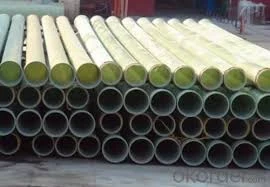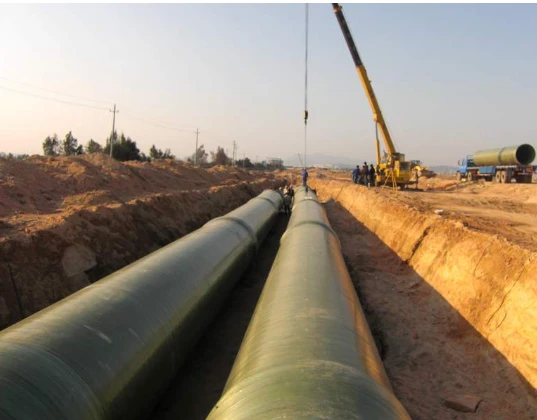
-
 Afrikaans
Afrikaans -
 Albanian
Albanian -
 Amharic
Amharic -
 Arabic
Arabic -
 Armenian
Armenian -
 Azerbaijani
Azerbaijani -
 Basque
Basque -
 Belarusian
Belarusian -
 Bengali
Bengali -
 Bosnian
Bosnian -
 Bulgarian
Bulgarian -
 Catalan
Catalan -
 Cebuano
Cebuano -
 China
China -
 China (Taiwan)
China (Taiwan) -
 Corsican
Corsican -
 Croatian
Croatian -
 Czech
Czech -
 Danish
Danish -
 Dutch
Dutch -
 English
English -
 Esperanto
Esperanto -
 Estonian
Estonian -
 Finnish
Finnish -
 French
French -
 Frisian
Frisian -
 Galician
Galician -
 Georgian
Georgian -
 German
German -
 Greek
Greek -
 Gujarati
Gujarati -
 Haitian Creole
Haitian Creole -
 hausa
hausa -
 hawaiian
hawaiian -
 Hebrew
Hebrew -
 Hindi
Hindi -
 Miao
Miao -
 Hungarian
Hungarian -
 Icelandic
Icelandic -
 igbo
igbo -
 Indonesian
Indonesian -
 irish
irish -
 Italian
Italian -
 Japanese
Japanese -
 Javanese
Javanese -
 Kannada
Kannada -
 kazakh
kazakh -
 Khmer
Khmer -
 Rwandese
Rwandese -
 Korean
Korean -
 Kurdish
Kurdish -
 Kyrgyz
Kyrgyz -
 Lao
Lao -
 Latin
Latin -
 Latvian
Latvian -
 Lithuanian
Lithuanian -
 Luxembourgish
Luxembourgish -
 Macedonian
Macedonian -
 Malgashi
Malgashi -
 Malay
Malay -
 Malayalam
Malayalam -
 Maltese
Maltese -
 Maori
Maori -
 Marathi
Marathi -
 Mongolian
Mongolian -
 Myanmar
Myanmar -
 Nepali
Nepali -
 Norwegian
Norwegian -
 Norwegian
Norwegian -
 Occitan
Occitan -
 Pashto
Pashto -
 Persian
Persian -
 Polish
Polish -
 Portuguese
Portuguese -
 Punjabi
Punjabi -
 Romanian
Romanian -
 Russian
Russian -
 Samoan
Samoan -
 Scottish Gaelic
Scottish Gaelic -
 Serbian
Serbian -
 Sesotho
Sesotho -
 Shona
Shona -
 Sindhi
Sindhi -
 Sinhala
Sinhala -
 Slovak
Slovak -
 Slovenian
Slovenian -
 Somali
Somali -
 Spanish
Spanish -
 Sundanese
Sundanese -
 Swahili
Swahili -
 Swedish
Swedish -
 Tagalog
Tagalog -
 Tajik
Tajik -
 Tamil
Tamil -
 Tatar
Tatar -
 Telugu
Telugu -
 Thai
Thai -
 Turkish
Turkish -
 Turkmen
Turkmen -
 Ukrainian
Ukrainian -
 Urdu
Urdu -
 Uighur
Uighur -
 Uzbek
Uzbek -
 Vietnamese
Vietnamese -
 Welsh
Welsh -
 Bantu
Bantu -
 Yiddish
Yiddish -
 Yoruba
Yoruba -
 Zulu
Zulu
FRP Rectangular Tanks Custom Sizes & Corrosion-Resistant Design
- Introduction to FRP Rectangular Containment Systems
- Technical Advantages and Performance Data
- Comparative Analysis of Leading Manufacturers
- Custom Engineering Design Considerations
- Industrial Application Case Studies
- Installation and Maintenance Protocols
- Future Developments in Composite Tank Technology

(frp rectangular tank)
Understanding FRP Rectangular Tanks
Fiberglass Reinforced Plastic (FRP) rectangular tanks represent engineering solutions designed for industrial fluid management. Unlike cylindrical alternatives, the rectangular configuration offers space efficiency in facilities with layout constraints. Manufacturers construct these vessels using multi-layer composite techniques - typically alternating resin-rich surface coats with structural fiberglass mat reinforcement. This creates monolithic structures resistant to electrochemical degradation while maintaining dimensional stability under load.
Chemical processing plants increasingly specify rectangular designs for secondary containment where footprint optimization is critical. The geometry enables modular configurations where multiple units can be ganged together in battery arrangements. Recent advances include integrated leak detection systems between primary and secondary containments, with sensor grids embedded during fabrication. Material science improvements have increased standard service temperatures to 150°F (65°C) for continuous operation.
Engineering Performance Characteristics
Mechanical testing reveals distinct advantages of FRP rectangular designs. ASTM D4097 compression tests demonstrate load-bearing capacities exceeding 25 psi without deformation - 35% higher than equivalent polyethylene units. The anisotropic nature of fiberglass allows directional reinforcement where needed, such as bottom panels supporting >50 lbs/gallon static loads. This structural efficiency reduces material consumption by approximately 18% versus uniform-thickness alternatives.
Permeation tests per ASTM F739 show negligible chemical transmission through properly engineered FRP laminates. When comparing corrosion resistance, FRP maintains structural integrity in pH environments from 2-12 where stainless steel alternatives exhibit pitting corrosion. Accelerated aging simulations predict 30+ year service life in chemical exposure applications, validated by installed units operating since the 1980s. Thermal expansion coefficients remain below 12 x 10-6 in/in/°F, ensuring dimensional stability across operating conditions.
Market Comparison Analysis
The industrial tank market offers varied solutions for rectangular containments. Manufacturer capabilities diverge significantly in customization potential and fabrication techniques:
| Manufacturer | Standard Dimensions (LxWxH ft) | Wall Thickness (in) | Max Capacity (gal) | Temperature Limit (°F) | Lead Time (weeks) |
|---|---|---|---|---|---|
| Composites Inc | 20x8x8 | 0.48 | 9,600 | 180 | 6-8 |
| PolyTech Solutions | 16x10x6 | 0.42 | 7,160 | 160 | 4-5 |
| Fiber Systems Co | 24x12x10 | 0.55 | 21,500 | 200 | 10-12 |
| Advance Tanks Ltd | 18x9x7 | 0.50 | 8,500 | 175 | 7-9 |
Third-party validation confirms Fiber Systems Co's filament wound corner reinforcements withstand 3x greater impact energy than standard hand-laid counterparts. Composites Inc offers proprietary resin formulations with NSF/61 certification for potable water applications - a critical differentiator for municipal projects. All manufacturers provide seismic anchoring systems meeting IBC 2018 requirements.
Customization Engineering Process
Designing rectangular tanks requires thorough process analysis before fabrication. Engineers first determine:
- Chemical compatibility matrix for resin selection
- Static/dynamic load calculations including seismic coefficients
- Accessory integration requirements (manways, nozzles, mixers)
- Insulation needs for temperature-sensitive contents
Finite Element Analysis (FEA) simulations optimize material distribution - typically increasing thickness by 15-20% at stress concentration points like mixer mounting pads. Recent projects demonstrate how custom baffle designs reduce sloshing forces by 40% in mobile applications. Fabricators now employ digital templating for connection points, achieving ±0.125-inch positioning accuracy compared to traditional ±0.5-inch tolerances.
Industrial Application Deployments
Wastewater treatment facilities utilize rectangular FRP tanks extensively. The Clearwater County plant installation features sixteen 22x10x8-foot equalization basins handling 2 million gallons daily. Each unit incorporates grit collection channels molded directly into the tank floor - eliminating traditional metal components that previously required biannual replacement.
Semiconductor manufacturers install specialized rectangular tanks for copper sulfate baths. The configuration accommodates rack handling systems impossible to implement in cylindrical vessels. One fabrication plant increased production throughput 22% after replacing three stainless steel tanks with a single FRP unit featuring advanced distribution headers that improved solution circulation.
Installation Methodology
Precision site preparation precedes FRP tank installation. Contractors grade foundations to within 1/8-inch over 10-foot spans before placing non-shrink grout bedding. Unlike site-welded metal tanks, FRP units install complete with all accessories - reducing field labor by up to 60%. Standard procedure requires 7-day curing of concrete foundations before tank placement.
Maintenance protocols focus on inspection schedules rather than preventative treatments. Quarterly evaluations include:
- Ultrasonic thickness testing at 25 predetermined points
- Visual inspection for osmotic blistering
- Internal coating integrity assessment
Documented field experience shows properly installed tanks require no major maintenance for 15-20 years. Cleaning procedures avoid abrasive methods that damage resin-rich surfaces.
Why FRP Rectangular Tanks Deliver Long-Term Performance
The fundamental advantage of rectangular tanks made of fiberglass material resides in their engineered adaptability. As process requirements evolve, modular FRP systems accommodate modifications impractical with fixed-site welded alternatives. Future developments focus on smart tank technology with embedded fiber optic sensors providing real-time structural health monitoring.
Composite technology continues advancing with graphene-enhanced resins entering commercial production. These formulations increase stiffness by 30% while reducing weight, potentially revolutionising large-scale containment design. The dimensional flexibility of FRP fabrication ensures these vessels remain viable solutions for evolving industrial challenges where other materials reach performance limitations.

(frp rectangular tank)
FAQS on frp rectangular tank
Q: What are the advantages of an FRP rectangular tank compared to other materials?
A: FRP rectangular tanks offer corrosion resistance, lightweight construction, and durability, making them ideal for harsh chemical or environmental conditions. They also require minimal maintenance and have a long service life.
Q: How are dimensions calculated for a rectangular tank made of fiberglass material?
A: Dimensions are determined based on capacity requirements, structural load distribution, and application-specific needs. GRP calculations account for wall thickness, reinforcements, and compliance with industry standards.
Q: Can FRP rectangular tanks be customized for specific industrial applications?
A: Yes, FRP tanks are highly customizable in size, fittings, and reinforcements. They are widely used in water treatment, chemical storage, and industrial processes due to their adaptable design.
Q: What maintenance is required for a rectangular tank with dimensions for GRP calculation?
A: Regular inspections for surface cracks and cleaning with non-abrasive agents are recommended. FRP's inherent resistance to corrosion reduces the need for frequent repairs.
Q: Are FRP rectangular tanks suitable for outdoor installation?
A: Absolutely. The fiberglass material resists UV degradation, temperature fluctuations, and moisture. Protective coatings can further enhance longevity in extreme outdoor environments.
Latest news
-
Molded Fiberglass Grating Durable & Corrosion-Resistant SolutionsNewsJun.01,2025
-
Rock Drilling Tools for Tunnels Heavy-Duty Specially-Designed SolutionsNewsJun.01,2025
-
GRP, Fiberglass & FRP Products for Thermal & Nuclear Power Plants Durable SolutionsNewsJun.01,2025
-
Durable FRP Chemical Storage Tanks Corrosion-Resistant SolutionsNewsJun.01,2025
-
Durable Fiber Water Tanks - Lightweight & Corrosion-Resistant SolutionsNewsJun.01,2025
-
FRP Rectangular Tanks Custom Sizes & Corrosion-Resistant DesignNewsJun.01,2025









